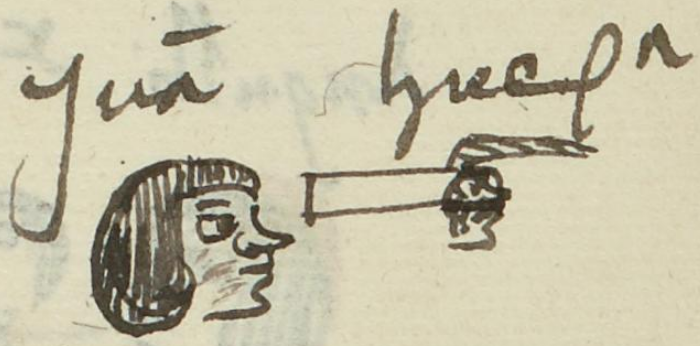Huepan (MH651v)
This black-line drawing of the compound glyph for the personal name Huepan (perhaps "He Dragged Wood") is attested here as a man's name. The glyph shows a horizontal wooden beam with a hole in the right end and a rope attached to the hole with the purpose of dragging the beam. The name Huepan comes from the verb huepana, to drag wood. A person's head overlaps with the spot on the beam where the cord goes through the hole. The head is difficult to make out, but it may be an elder (huehue), included as a phonetic complement for the start of the name, Hue-.
Stephanie Wood
There was a Huepan who was a noble of Tlaxcala who was alive at the time of the Spanish invasion; perhaps this man is named after him. [See: Luis Reyes García, La escritura pictográfica en Tlaxcala (1993), 137.]
Stephanie Wood
1560
Jeff Haskett-Wood
madera, arrastrar, nombres de hombres famosos, nombres de hombres

huepana, to drag wood, https://nahuatl.wired-humanities.org/content/huepana
tlaca(tl), a person, https://nahuatl.wired-humanities.org/content/tlacatl
huilana, to drag wood, https://nahuatl.wired-humanities.org/content/huilana
huehue, an elder, https://nahuatl.wired-humanities.org/content/huehue
Arrastra Vigas (?)
Stephanie Wood
Matrícula de Huexotzinco, folio 651v, World Digital Library, https://www.loc.gov/resource/gdcwdl.wdl_15282/?sp=385&st=image
This manuscript is hosted by the Library of Congress and the World Digital Library; used here with the Creative Commons, “Attribution-NonCommercial-ShareAlike 3.0 License” (CC-BY-NC-SAq 3.0).





